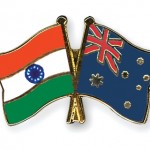India’s traditional strategic outlook, dominated since Independence and Partition by a focus on continental challenges, is  now undergoing a significant shift as it adjusts to a newly insistent gaze that looks out to India’s long coasts and the vast maritime expanses beyond. The expanding naval dimension of India’s foreign policy is growing ever clearer, most notably in the Ocean that bears its name, throughout which New Delhi intends to assert a strong presence, while insisting on the legitimacy of this emerging policy.
now undergoing a significant shift as it adjusts to a newly insistent gaze that looks out to India’s long coasts and the vast maritime expanses beyond. The expanding naval dimension of India’s foreign policy is growing ever clearer, most notably in the Ocean that bears its name, throughout which New Delhi intends to assert a strong presence, while insisting on the legitimacy of this emerging policy.
Drawn to the openness of the seas, viewed as a means to broaden the scope of its external action, while seeking in the same movement to hermetically insulate itself from any disruption originating from abroad (political or economic), India has not yet put to rest a central ambivalence in its perception of the Indian Ocean. Regardless, there can be no doubt as to its determination to become a major player in a region where it has observed with discomfort the growing Chinese footprint, which has led Indian leaders to consider with an increasing sense of urgency the state of New Delhi’s own naval capacities.
Australia exhibits a similar discomfort with China’s inroads into the Indian Ocean, and shares with India a desire to play an active role in the region. Despite this commonality of perceptions and of intentions, the two countries’ ascent in the area differs both in scope and in the means they rely on. Such divergences have contributed to the absence, to date, of meaningful cooperation between India and Australia in the Indian Ocean, to say nothing of an enduring, strategic relationship. Moreover, the reality of a Canberra New Delhi axis remains limited considering the different visions the two protagonists have of it. On the Indian side, the exchanges with Australia are unbalanced due to the vision of the Indian Ocean as a strategic extension of the peninsula. On the Australian side, the subtle balance between strong economic and trade relations with Beijing and reaffirmed political and military relations with Washington justify a new “front” strategy in which India appears to be just one actor among others.
Yet conditions may be evolving to favor the emergence of a new partnership, as Canberra and New Delhi both reassess the importance of the region and subsequently position themselves against any hegemonic enterprise, real, perceived, or hypothetical. Like India, Australia has significantly retooled and upgraded its posture to better project influence in a region in the throes of deep geopolitical shifts. Like India, Australia now views the Indian Ocean as vital both for its security and for commerce. Like India, finally, Australia now invokes the expansion of China’s naval presence and of the number of agreements linking China to various countries in the region to justify these new initiatives.
The article, “India and Australia: An Emerging Partnership in the Indian Ocean?” was co-written with Barthelemy Courmont and published in the Summer 2013 issue of the Korean Journal of Defense Analysis (volume 25 number 2).
You can access it online at http://www.kida.re.kr/eng/publication/publication01_2.htm or download the pdf directly: http://www.kida.re.kr/data/kjda/08_Courmont&Geraphty.pdf


